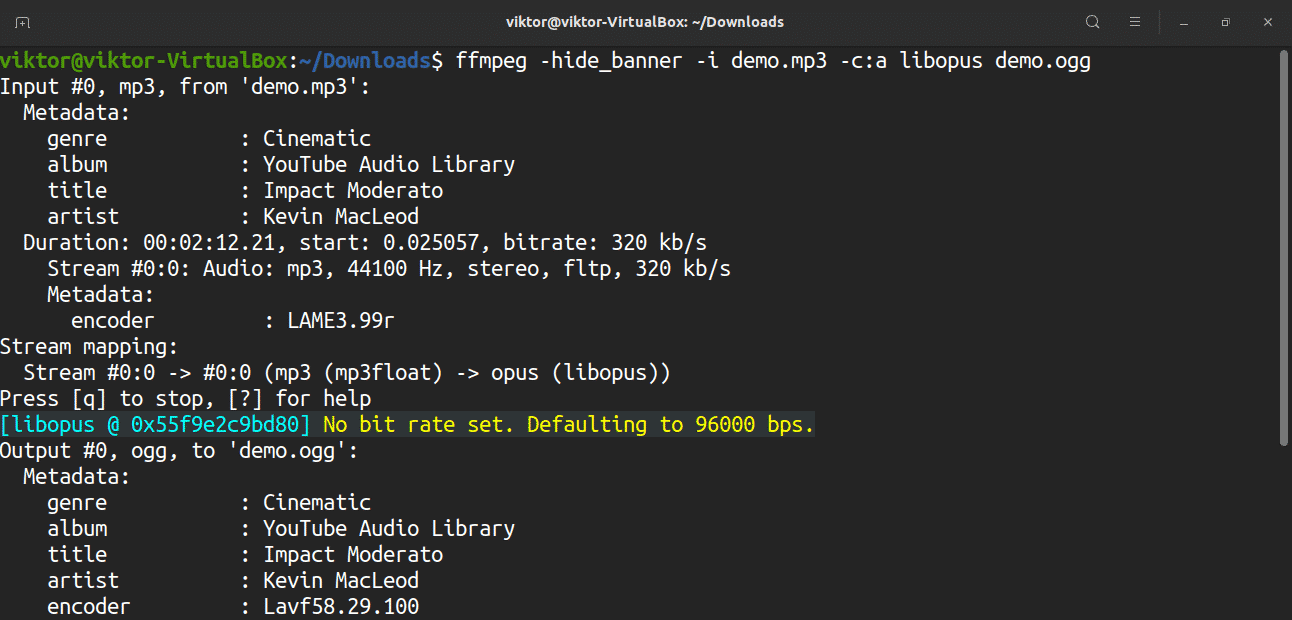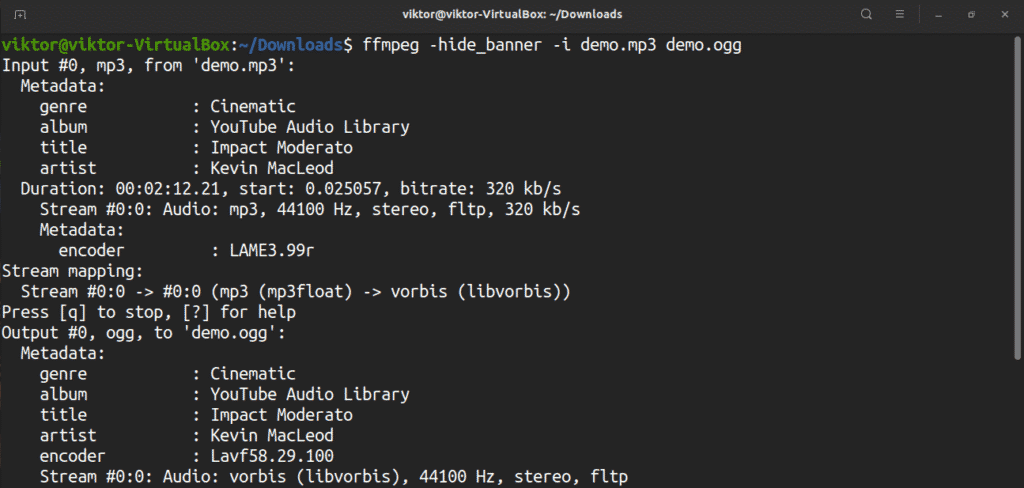

- FFMPEG LINUX USAGE HOW TO
- FFMPEG LINUX USAGE MP4
- FFMPEG LINUX USAGE SOFTWARE
- FFMPEG LINUX USAGE CODE
Hi, I'm happy to help, but example command lines are easy to find in server logs. maybe add more encoding options, if emby uses them).ĮDIT: so i guess you can say it will intercept commands for libx264 Edited Maby memeka
FFMPEG LINUX USAGE CODE
This is why I would want to test a transcoding command generated by emby, and redirect output to a file, to be able to debug and modify the code for the encoder (e.g. I assume if other encoding options are set by ffmpeg, they will just be ignored. h264 level is currently hardcoded to 3.2, as the hardware even tho` it says it's supporting 4.0, it's not working well. There should not be any proprietary stuff, it reads from ffmpeg settings like gop size, encoder bit rate, qmin/qmax and h264 profile. I can transcode a file with a command like:įfmpeg -i file.mkv -vcodec h264_v4l2m2m file-encoded.mp4Īctually h264_v4l2m2m currently it's set as "default" so it will be picked automatically just by something like "ffmpeg -i file.mp4 file-encoded.mp4". You can see here there's the libx264 encoder and the h264_v4l2m2m encoder that i want to use. For more detail please visit the official FFmpeg Documentat.Ffmpeg version 3.2.4-1 Copyright (c) 2000-2017 the FFmpeg developersĭEV.LS h264 H.264 / AVC / MPEG-4 AVC / MPEG-4 part 10 (decoders: h264_v4l2m2m h264 h264_vdpau ) (encoders: h264_v4l2m2m libx264 libx264rgb h264_omx h264_vaapi )
FFMPEG LINUX USAGE HOW TO
We have shown you how to install FFmpeg on CentOS 8 machines. # ffmpeg -i input.mp3 -c:a libopus output.ogg Conclusion: # ffmpeg -i input.mp4 -c:v libvpx -c:a libvorbis output.webmĬonvert an audio file from mp3 to ogg encoded with the libopus codec.
FFMPEG LINUX USAGE MP4
The codec can be the name of any supported decoder/encoder or a special value copy that simply copies the input stream.Ĭonvert a video file from mp4 to webm using the libvpx video codec and libvorbis audio codec: You can specify the codecs you want to use with the -c option. The input file format is auto-detected, and the output format is guessed from the file extension. When converting audio and video files using ffmpeg, you do not have to specify the input and output formats.


# ffmpeg -version Step 6: FFMPEG Audio and Video file conversion: Try one of the two commands, and you should see similar output on successful install. If everything worked as expected, you should be able to see the installed version. Now install the ffmpeg package using the yum command: You can install it using YUM, issue the following command: Step 3: Install SDL2 Library DependenciesįFMpeg will require the use of the SDL2 library. Press y to proceed with the installation. Using YUM, you can install RPM Fusion repository:
FFMPEG LINUX USAGE SOFTWARE
They are both free to use, but the non-free repository contains software that may not be covered under open source licensing. RPM Fusion has two repositories we will be using, a free one and a nonfree one. # yum install Step 2: Install RPM Fusion repository The EPEL repository can be installed using YUM or DNF, whichever you’re more comfortable with. You need to enable EPEL on CentOS before you enable RPM Fusion. First you have to install the EPEL repository, which contains a bunch of extra packages not shipped with the base CentOS 8 install media.Įxtra Packages for Enterprise Linux (or EPEL) is a Fedora Special Interest Group that creates, maintains, and manages a high quality set of additional packages for Enterprise Linux, including, but not limited to, Red Hat Enterprise Linux (RHEL), CentOS and Scientific Linux (SL), Oracle Linux (OL).


 0 kommentar(er)
0 kommentar(er)
